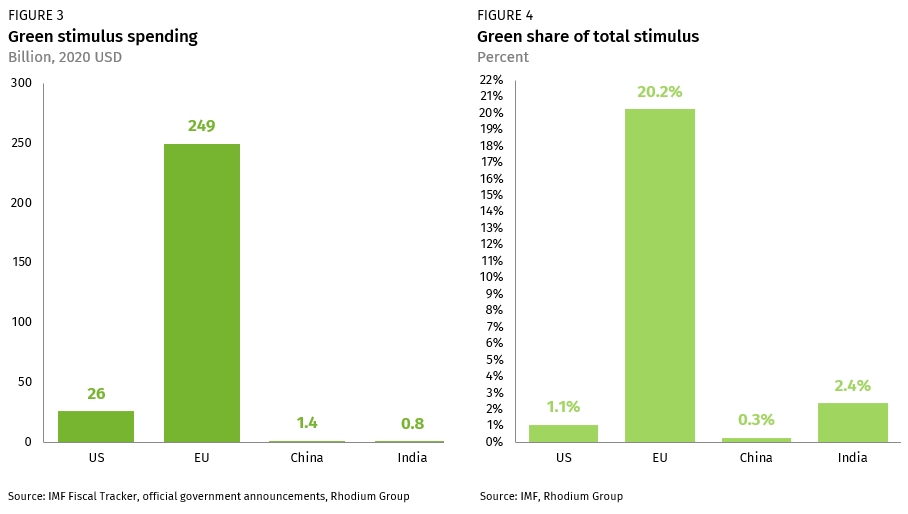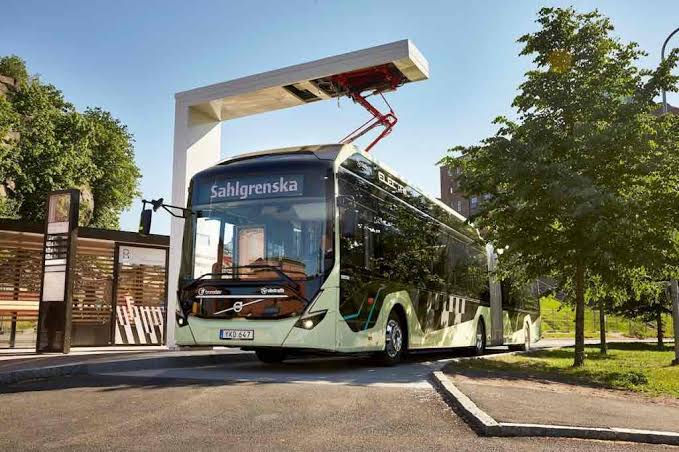India requires a Green Stimulus to encourage a V-shaped economic recovery in 2021

Economic Survey 2020-21 has highlighted that after the lockdown is lifted in July 2020, a V-shaped economic recovery is underway. As per the Economic Survey, the V-shaped recovery will be mainly supported by a mega vaccination drive; resurgence in high-frequency indicators like rail freights, power demands, E-Way bills, steel consumption, and Goods and Services Tax (GST) collection among others; and Aatmanirbhar Bharat Mission. An immense demand green stimulus is the need of the hour in getting the desired V-shaped economic recovery. A green stimulus can come to the rescue that will address air pollution and quicken India’s green energy transition.
What is Green Fiscal Stimulus?
According to United Nations Environment Program, green stimulus incorporate crisis spending to restart the economy with environmental objectives in mind. The transformation to low-carbon economies offers new jobs, new opportunities for the development of business and the unfolding of new sectors. Green green stimulus recognizes rapid economic stimuli that also provide an environmental or “green” motive. For example, remodelling of a fossil-fuel subsidy to alternatively help small business owners rebound.
How does Green Fiscal Stimulus work, and who funds it?
Several techniques support nations in eliminating ineffective expenditures such as environmentally damaging subsidies. Many subsidies display an era when fossil fuel extraction was supported, and additional incentives were provided along with such subsidies. As the way the world is powering itself in transforming to cleaner energy, subsidies can be restructured to reflect the possibilities and requirements of the new era. This will produce fiscal space and redistribute public funding resources in prompt COVID-19 measures and medium-to-long-term fundamental recovery planning. 
Innovative funding solutions and combined public-private proposals that divide the costs and benefits of financing in essential and resilient infrastructure are also occasions to finance in building infrastructure that will be more durable to climate change. Presently the stock and use of the world’s infrastructure are related to the emission of 60 per cent of global greenhouse gases.
Investing in job-generating infrastructure projects presently will aid nations and societies to recuperate from the current crisis. However, if the same projects are also compatible with the Paris Agreement and Sustainable Development Goals (SDG), this will also assist in helping to mitigate the forthcoming crises of uncontrolled climate change.
Green green stimulus in India

That time is not far when our newspapers and news channels will be flooded with images and videos of Delhi and its neighbouring places getting choked in thick smoke and air pollution. In a few months from now, just around Diwali, northern India will be gagged with an air pollution crisis by the burning of rice crop residues. This deadly situation which has become an annual event can be avoided by obtaining all the crop waste at a lucrative price. The wastes can be changed into briquettes, which can be used in place of coal in thermal power stations.
This was already done by NTPC successfully without adding the cost of generation, as the price of briquettes is almost similar to that of coal in terms of energy. Private entrepreneurs can take the initiative of converting crop waste into briquettes. Private investment would be scattered for the conversion, thereby creating a demand for the equipment of conversion, transport and labour. Air pollution would be reduced and that too without any expenditure of the government. According to Mr Ajay Shankar, the time to begin such an initiative is now.
Electric automobiles (cars, two and three-wheelers) are accessible in the market. They do not contribute to air pollution. Also, they are decently cheaper to run on a life cycle per kilometre basis. But unfortunately, the demand is not rising because of the backwardness of the charging infrastructure. Unless a vital mass of charging infrastructure on roads, highways as well as in-office and residential complexes are created, the demand for EVs will not increase and the funding on charging infrastructure will not deliver appropriate returns. A national program for constructing charging stations in all cities with a population of more than a million is called for.
The program should be financed completely through a central government assured debt. This would offer a substantial demand green stimulus across the nation, thereby generate a sustained efflux in demand for EVs and their production supply chain. The buying of electric buses for city bus services may also be completely funded through government assured debt. These initiatives, in addition to creating a demand green stimulus, would also make way to considerable improvement in air quality in our dangerously polluted cities.
India has exhibited commendable ambition in going well beyond its pledge under the Paris agreement to aspire for 450 GW of renewable energy capacity by the end of this decade. An easy method of achieving advancement is to have a national policy regulation for states to get electricity distribution companies to declare a lucrative price (feed-in tariff) at which they would purchase solar power in the range of KW from the rural regions. This was pointed out in the Finance Minister’s Budget speech and needs to be obeyed thoroughly.
This would demand transmission funding. Distribution companies would conserve money as their real cost of distributing power to rural areas is more than Rs 7 per unit whereas a lucrative feed-in tariff for solar power could not be more than Rs 4 per unit. Solar power produced in a village would make it more accessible to provide power in the day to farmers for irrigation purposes.
This would in turn facilitate more effective use of water. If producing 1 MW from a village is realistic, with almost 6 lakh villages, a potential of 600 GW capacity creation is not absurd. Such a project would produce widely distributed private investment and multiplied incomes. For example, Germany used a feed-in tariff with huge effect to become a chief in the use of solar energy.
Now all the households have access to LPG stoves and cylinders and almost all of them have got a stable electricity connection. As a result, cow dung is no more used for cooking. The cow dungs can be converted in small village-level plants to bio-gas which can be utilized as a fuel for cooking and transport. It can also be used to produce electricity in small quantities. Government should promote for procurement of biogas at a lucrative price or the electricity generated by the gas. This would encourage income and employment generation in the villages as well as it could create appropriate incentives for private financing.
Our country has the largest population of cattle in the world and the target should be to convert all the cow dung into functional commercial energy. This would be a correct case for the cross-subsidy. National Solar Mission was aided by cross-subsidy. Since then, prices have dropped drastically. The above-discussed recommendations given by Mr Ajay Shankar are a few innovative and cost-friendly techniques for a green stimulus that would generate dispersed demand and employment with large effects.
Edited by Aishwarya Ingle




